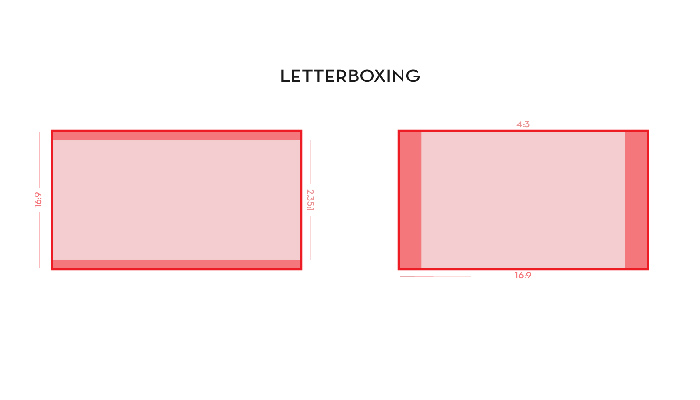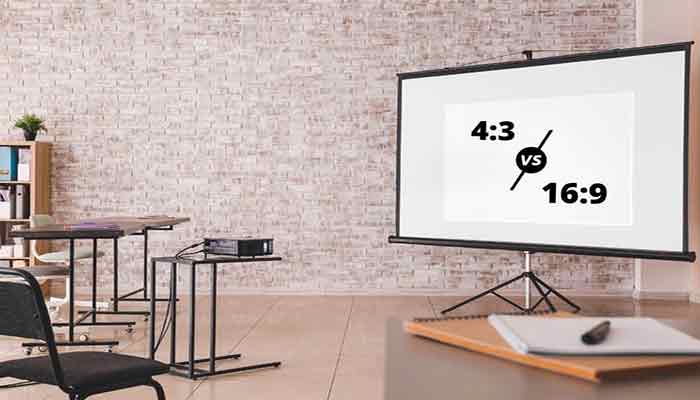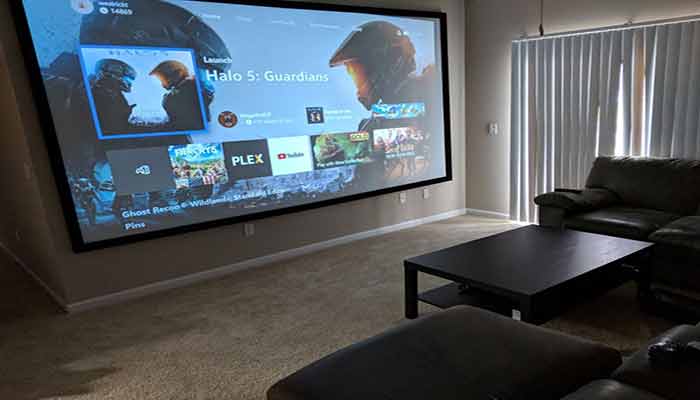Table of Contents
I’ve been in the market for my first projector screen for a while. I was looking around and trying to figure out whether I wanted a 4:3 or 16:9. After looking into it, I learned that there is a big difference in aspect ratio. The best thing you can do as someone who is buying your first projection screen is to make sure you know what your needs are before buying something that might not work well for you.
What is the Aspect Ratio?
“The aspect ratio is the ratio of width to height of an image.” In terms of screens, this means how wide the television or display is compared to its height.
For example, a 16:9 aspect ratio means that for every 9 inches of height you get 16 inches of width. A 4:3 aspect ratio is very similar, except that there are only 4 inches to every 3 inches, which makes the screen much wider in comparison.
4:3 vs 16:9 Screen – Which one is for you?
I’ve got a few friends in the market for their first projector screen. I’ve always been interested in getting one, but I didn’t know which screen to get. For instance, did I want to go big and buy a 4:3 or 16:9?
You can choose between a 4:3 or 16:9 projection screen.
If you are looking for a projector screen that fits into your budget, then you will probably want to consider the 4:3 version over the 16:9 version.
However, if you need something that can show off all of your favorite games and movies, then the 16:9 version is definitely going to be a better option.
4:3 vs 16:9 Projector Screen – Which is Better?
While a 16:9 projection screen is going to cost more than a 4:3 projection screen, there are a number of reasons why you might want to purchase one.
If you want to watch a movie from your laptop on your projector, then you will definitely want to consider getting the 16:9 screen.
You can just make it much bigger so that the whole family can watch it together. A lot of people like to set up their own home theater in their living room and there is no better way to do this than with an HD projector and a 16:9 screen.
Which one to Choose for Home Theater?
A projector screen that is going to be used with an HD projector will need to have a 16:9 aspect ratio. However, there are plenty of 4:3 projection screen options as well.
For example, if you want a bigger or nicer screen in your home theater that doesn’t cost too much money, then it might be worth getting a 4:3 projection screen instead.
Which one is for Gaming Projector?
A 16:9 screen will definitely be a better option for a gaming projector. For example, if you want to play video games on your projector, then you will need the extra width that the 16:9 offers in order to get everything looking good and well-defined.
16:9 vs 4:3 Projector Screen – Which one to Choose for Movie Projector?
If you are going to be watching movies on your projector screen, then it is important that you purchase one that has a 16:9 aspect ratio. That’s because it’s much more like an HDTV than a computer screen. If you are trying to watch a movie on a computer screen, then you might be disappointed with the results.
Which one to Choose for Business Projector?
If you are going to be using your projector for a business presentation, then you will definitely want to invest in a 16:9 screen. That’s because it can take up quite a bit of space and if you are giving a presentation for more than one person, then the 16:9 screen is going to be able to fit more people at once.
Which one is Wider 4:3 or 16:9?
The 4:3 aspect ratio gives you four times as many pixels for every 3 inches of height when compared to the wider 16:9 aspect ratio. As a result, the 4:3 screen will be wider than the 16:9 screen.
Which is More Expensive?
A 4:3 projector screen is going to cost a lot less than a 16:9 screen. While there are definitely 16:9 screens that allow you to save money, for example with our budget 16:9 projector screen, they don’t have quite as many features.
16:9 vs 4:3 Projector Screen – What’s the Difference?
The main difference between a 4:3 and 16:9 projection screen is how wide the screen is compared to its height.
For example, if you have a 16:9 screen on your laptop and you’re watching Netflix on it, it looks like there are four separate screens on your computer.
That’s because, in a 16:9 aspect ratio for your computer, there are 4 times as many pixels for every 2 inches of width as there are in a 4:3 aspect ratio. A 16:9 projector screen will look more like an HDTV than a computer screen.
Frequently Asked Questions
Can You Watch Content of 4:3 on a 16:9 Display and Vice-Versa?
If you want to watch 4:3 content on a 16:9 display, then you can. In fact, that is the standard for most computers and TVs these days.
You can’t however view 4:3 content on a 16:9 screen and because of that, there won’t be anything that you should download to do this.
Conclusion
There are lots of differences when it comes to the 4:3 vs the 16:9 projector screen. To the end-user, it all comes down to their needs at that particular time and for what they are going to be using the screen for.
Remember, you shouldn’t just purchase a screen based on how you want it now or what everyone else thinks is best. You should also think about your future and what you will need your screen for in the future as well.
Related Articles:
- How to Clean a Projector | 10 Easy Steps
- White vs Grey vs Silver Projector Screen
- How to Clean a Projector Lens?
- How to Choose a Projector Screen?
- 3D Projectors: Everything You Need To Know About 3D Projectors
- Some Common Projector Aspect Ratio and Examples To Understand Better
- How to connect Roku stick to a projector?
- What kind of paint to use for a projector screen?








